Spot welder is a crucial manufacturing tool that combines innovation and efficiency to produce high-quality products with diverse applications in various industries. Spot welders are available for various materials, including steel, aluminum, copper, and stainless steel.
If you’re looking for clear steps and useful tips on how to use and control spot welders, then you have come to the right place! Let’s keep reading and take a deep look at the spot welders used in wide-ranging applications.
What is spot welding? Spot welding is an electrical welding technique used to join two metal pieces together using a combination of pressure and heat generated by an electrical current. Copper electrodes, known for their superior thermal conductivity and electrical resistance, are commonly used in spot welding processes.
When it comes to tack weld vs spot weld, spot weld is a permanent method of fusing two or more pieces. It is primarily suited for sheet metals, as the concentrated current flow eliminates resistance and facilitates the fusion process. Due to its flexibility and ability to create durable welds, the automotive industry extensively employs mig spot welding. Besides, the integration of robotic automation has further improved the efficiency and speed of spot welding, making widespread adoption across industries.
Spot welding offers advantages such as faster process times, reduced consumption of materials, and the ability to produce reliable joints. To perform spot welding, a spot welder may help. The spot weld cutter often has multiple blades and a center tip for smooth and accurate cutting. It provides the necessary electrical power, control, and mechanical components to create reliable and consistent spot welds.
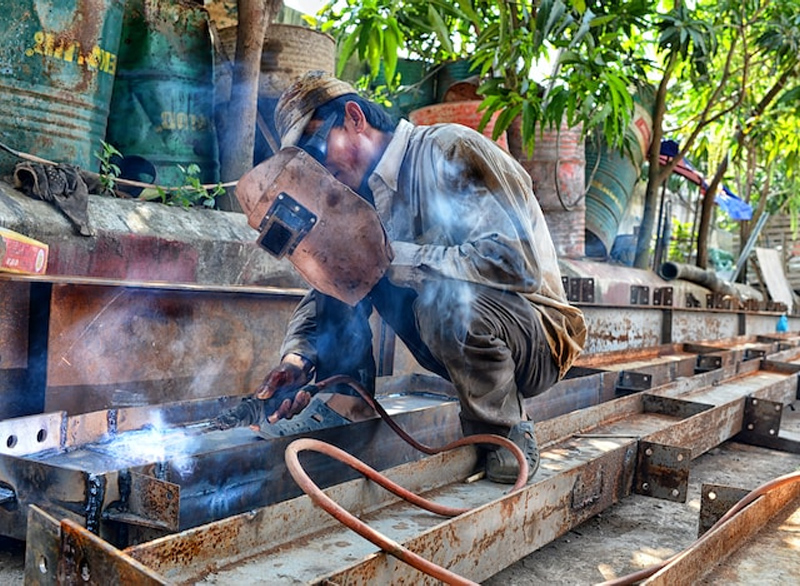
Many people don’t know how to spot weld. Can you spot weld aluminum? How about spot welding stainless steel? Spot welder is possible but not easy to use. it’s undoubtedly tricky work. Here I will discuss the basic method step by step.
Wipe the metal and the electrode tongs with a clean cloth. Debris from previous welds can affect the quality of your spot weld. If there’s any dust or dirt on the metal you plan to weld or the electrodes, they could spark up when you weld the metal. Take a clean cloth and wipe down the area of the metal you plan to weld as well as the tips of the electrode tongs.
Clamp the 2 pieces together with a pair of vice-grip pliers. Connect the pieces of metal that you plan to weld so they’re flush against each other. Take a pair of vice grips and clamp down on the metal so they don’t move and you have a handle to hold them with. Especially to perform TIG spot welding, you need to attach the work lead (also called the ground cable) to the less accessible piece of metal and clamp the joining piece firmly in place.
Adjust the position of the electrodes to create enough space for the metal to be inserted between them. The spot welder machine typically features adjustable electrodes. Utilize the adjustment knob or wheel to spread them apart, ensuring that they are wide enough to accommodate the metal that is going to be welded.
Before beginning the welding process, ensure that the welder is properly plugged into a nearby wall outlet and switch on the machine. Then, insert the metal piece between the two electrode tongs by holding the handle of the vice grip pliers. Keep the metal still as you prepare the tongs for spot welding, aiming to fuse the metal pieces.
To position the metal for welding, insert it between the two electrode tongs. Hold the handle of the vice grip pliers and move the metal between the tongs while ensuring it remains still. With one hand holding the metal, use the other hand to press down on the handle, closing the tongs. As the tongs connect with the metal, they will pass an electrical current through it, heating the spot where they are joined. Within seconds, you will notice the metal beginning to heat up.
Maintain pressure on the handle for 3-5 seconds to effectively fuse the metal. It is crucial to ensure a proper weld by allowing the electrode tongs to stay connected to the metal for at least 3 seconds. However, it is important to avoid exceeding 5 seconds, as this can cause excessive heat that may result in excessive melting and compromise the quality of the spot welding with mig.
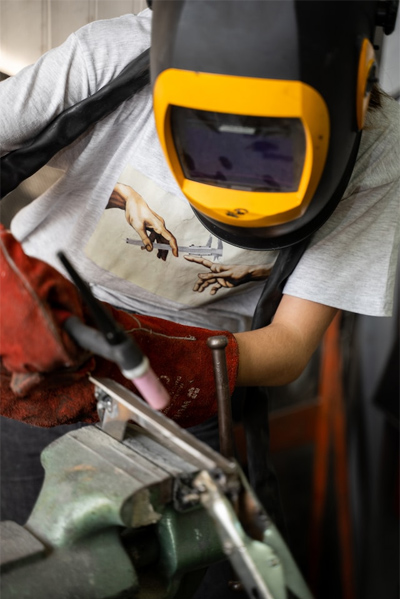
Remove the metal and let it cool for 5 minutes. Inspect the fused area to ensure a proper weld. Before proceeding to weld other spots, it is essential to allow the metal to cool down. Once cooled, use a clean cloth to remove any residual soot from the surface.
After going through this tutorial, you may find spot welding to be quite complex. It is natural to have concerns about effectively managing the process. This is where a reliable supplier can come in handy to help address any issues. Richconn stands out in the field of spot welding with its expertise and dedicated team.
You may already have a good understanding of spot welding. Now, let's provide some tips on how to control spot welders to ensure high-quality projects. The quality and consistency of spot welds depend on various factors, which include but are not limited to the following. These parameters represent the most fundamental considerations that apply in most situations.
To ensure high-quality spot welds, consider the following spot welder tips:
The electrode forces refer to the energy requirement for fusing specific metal alloys. It is crucial to find the right balance because excessive thermal energy can negatively impact weld quality. Finding the correct combination of current and pressure is essential in managing electrode forces and minimizing spatter generation. In Richconn, you don’t need to worry about it. Our engineers and welders will choose the appropriate combination based on the specific requirements of each project. In some situations, where quality is not a priority, your ideal combination would be high current and low pressure. For high-quality spot welding sheet metal, Richconn chooses to reduce current and increase pressure/hold time.
Increasing the hold or squeeze time, and the duration the workpiece remains under pressure before applying the current can enhance weld quality. Extending the squeeze time can greatly enhance the overall weld quality since it allows the workpiece to stabilize for a longer duration. Additionally, the initial pressure applied during this time induces permanent deformation in the workpiece tips without the need for heat, ensuring optimal quality and strength.
However, it is important to consider the trade-off, as increasing squeeze time can impact production efficiency and increase costs. The squeeze time must be carefully balanced with the project requirements to achieve the optimum combination of quality and efficiency.
Weld time is the total time the workpiece remains under the application of the current. In general, minimizing weld time results in high-quality welds. However, excessively short durations can lead to inadequate fusion and potential problems later on. Typically, AHSS guidelines suggest a typical weld time of about 1/5th of a second, but this can vary based on factors such as weld distance, required strength, and material properties.
The hold time refers to the duration the workpiece remains under pressure after the application of current, allowing the weld area to solidify. Increasing hold time can enhance joint quality by maintaining pressure and stability. However, excessive hold time can lead to issues such as heat dissipation towards the electrodes, causing wear, and the development of cracks, particularly in brittle materials like certain carbon steels. The appropriate hold time should be determined to strike a balance between achieving quality and avoiding potential drawbacks.
Wanna get more spot welding tips? Contact Richconn instantly!
Finding a reliable and efficient spot welder is of utmost importance when it comes to achieving precise and high-quality welds. With numerous options available in the market, it can be challenging to determine which spot welding machine is the best fit for your needs. Fortunately, we have compiled a comprehensive guide to assist you in selecting the top spot welders available. Here’s precisely how to pick the best spot weld in the market.
Ensure the compatibility of the welder's input voltage. Before making a purchase, it is essential to check the resistance spot welder's input voltage to avoid any inconvenience caused by incompatible socket configurations. Typically, there are two variations of input voltage: 110/120V and 230/240V. The latter is better suited for powering high-power devices, making most 230V devices more powerful. However, it is worth noting that 230V outputs are not commonly found in households. Nevertheless, it is possible to switch to a 230/240V system with the assistance of a qualified electrician. There is another spot welder, called single sided spot welder, which typically delivers current for 0.1 seconds or less, so the current must be extremely high, and spot-welding machines typically deliver 150 amps per phase draw on a 440-volt system.
The welding current or amperage has an impact on the electrode and the depth of penetration in the workpiece. It is important to regularly check and assess the welding current to determine its effects on the metals being welded, particularly considering their thicknesses. It should be noted that a spot welding device may not be able to achieve effective welding if the welding current is restricted or limited.
In many cases, there is no need to calculate the thickness of the materials that can be welded by the machine, as this information is typically provided by the manufacturer. It is recommended to consult the provided list of weldable materials to ensure compatibility. By doing so, you can avoid any last-minute realization that the machine you purchased is not suitable for the metals or metal thicknesses you intended to weld.
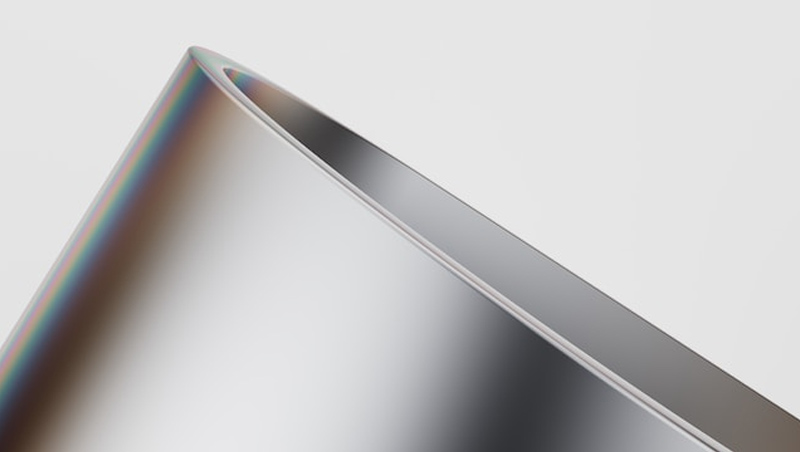
If you want to find out how long your spot welder miller can operate before having to cool off, you look at the duty cycle. For example, a 40% duty cycle at 180A indicates that the welder can function for four minutes within ten minutes before requiring a six-minute cool-off period. Generally, a higher duty cycle is better for you.
Portability may also be another factor for some welders, especially if you offer remote services or prefer to work on the go. However, not everyone places the same level of importance on portability, and some users may be okay with a heavy and difficult-to-move device as long as it gets the job done.
The type of power source is an important factor to consider when choosing a spot weld. Various welders require different power sources, such as a socket connection, battery power, or compatibility with generators. It is crucial to select a welder that aligns with the power source available in your workshop. If your workshop operates with a generator or has 230V or 110V sockets, it is essential to find a compatible welder. Battery-operated welders offer the benefit of portability,
In many cases, purchasing a spot welder requires additional accessories to enhance its functionality. These accessories may either be included with the initial purchase or you’ll need to look for and acquire them for a different price and at a different time. Opting for a spot welder that comes with multiple accessories included can prove advantageous as it can save both money and time. Therefore, it is beneficial to choose a spot welder that offers multiple accessories as part of the initial purchase.
The warranty provides a convenient solution for those concerned about potential financial loss. Given the large-scale production of welders by manufacturers, it is understandable that a few units may have lower quality or exhibit defects right from the beginning. With a warranty, you can easily obtain a replacement or get necessary repairs without incurring extra costs.
Spot welders are available at various price points, so it's important to consider your budget before making a purchase. However, it is advised to avoid extremely low-priced options, even if you are on a tight budget. Opting for a very cheap spot welder often means compromising on quality, functionality, and durability. Such purchases may not meet your expectations and may not last long, resulting in a substandard investment.
If you feel that purchasing a spot welder requires too much effort and money, you can rely on an excellent manufacturer like Richconn. With extensive experience in welding services and various sheet metal fabrication processes, Richconn can provide the most effective solutions for common industrial problems. What's more, accessing this level of quality and expertise doesn't require a significant amount of capital as our services are highly competitive in terms of cost.
Spot welds refer to welds that unite two metal pieces by melting and fusing them. However, there are instances where you may need to eliminate these welds, such as when dismantling a project vehicle. The specific methods used to remove spot welds depend on the available tools and materials. Here are some commonly used ways to remove spot welds:
Drill Bit
This spot weld drill is essentially a very wide but flat drill bit with a self-centering tip so it will not wander. These spot weld removals have the advantage of being made from one piece of metal so there are no pieces that could break.
Spot Weld Cutter
It involves the use of a specialized spot weld cutter equipped with a small centering pin. The purpose of this pin is to establish initial contact with the panel, preventing the cutter from wandering. The pin is designed with a spring mechanism, enabling it to depress and initiate the cutting process as pressure is applied to the panel. The cutting wheel of the spot weld cutter resembles a larger version of a wood hole saw, specifically designed to accommodate the size of the spot weld.
Grinder
Using an angle grinder, the spot weld is removed directly above the metal without burning through the panel. Once you've removed most of the first layer of metal, use a punch or chisel and hammer to break the remaining metal free. If you're not sure how much metal you've removed, hit the center of the spot weld, and the spot weld outline will appear.
Chisel
This method uses a chisel and a hammer to break the spot welds and separate the metal pieces. Locate the spot weld removal tool, and then use the chisel and the hammer to pry the metal pieces apart.
In various industries, spot welders are used in manufacturing processes to join metals together due to their versatility and efficiency. Among these industries, four sectors heavily rely on spot welding to ensure high-quality products.
Electronics
Spot welder is crucial for applying in assembling components such as circuit boards, gas sensors, and solar panels. The precise and concentrated welds guarantee both quality and efficiency in production. Additionally, spot welding is ideal for complex electrical components that require intricate details while allowing sufficient space for other capabilities and processes.
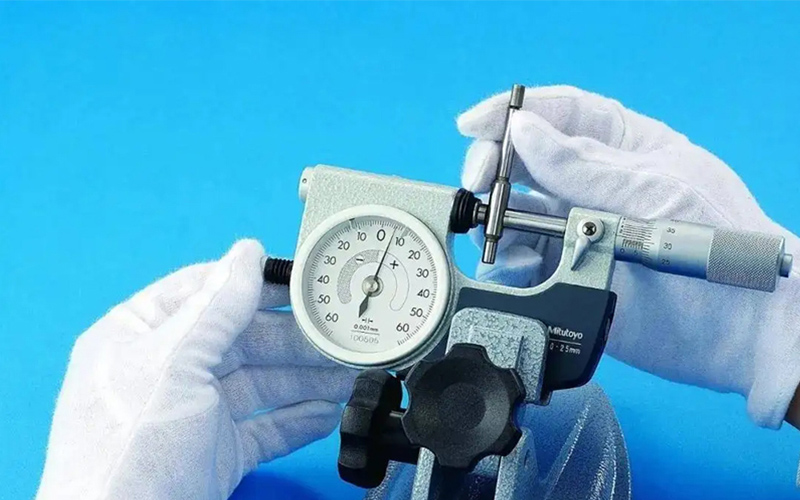
Automobiles
The automotive sector extensively employs spot welders as primary machining for joining sheet metal components. This cost-effective and efficient welding process requires minimal setup and can easily be integrated into assembly lines. It is highly suitable for automation, making it a common choice for automotive manufacturers.

Join Rolls of Nails
When it comes to the production of nails, spot welder proves to be an exceptional machining. This welding process enables the creation of nails at a faster rate, thanks to its compatibility with automation, surpassing the efficiency of traditional pneumatic nail guns.
Manufacturing Batteries
Spot welder is highly suited for the manufacturing of batteries. With batteries consisting of multiple interconnected terminals requiring partitioning using sheet metals, spot welding emerges as the optimal choice for ensuring the seamless assembly of battery components.
Spot welding is a highly efficient method for joining sheet metal, but it is crucial to achieve optimal results for consistent quality. If you are seeking a reliable partner for welding or sheet metal fabrication needs, Richconn is the perfect choice. Richconn brings extensive experience and a dedicated team to the table, making it an ideal solution for all your welding and sheet metal fabrication-related concerns.
Quality Assurance
It keeps maintaining top-tier manufacturing standards unwavering, ensuring impeccable quality assurance.
Material Variety
Clients can benefit from a diverse range of material options, including aluminum, steel, and various metal alloys, tailored to suit specific needs.
Efficient Production
With streamlined production processes in place, Richconn can deliver products on time without sacrificing precision.
Responsive Support
Its dedicated customer support team is responsive and guarantees prompt assistance and customer satisfaction.
Competitive Pricing
Richconn offers cost-effective solutions that do not compromise the quality of its products to tailor your needs.
Whether you’re a seasoned professional or a beginner, this article will help you get the most out of your spot welder and excel in your welding projects. If you still want to learn more about spot welding, contact the Richconn representative.
Richconn provides a wide range of manufacturing capabilities, including sheet metal and other value-added services for all of your prototyping and production needs. Visit its website to learn more or to request a free, no-obligation quote!
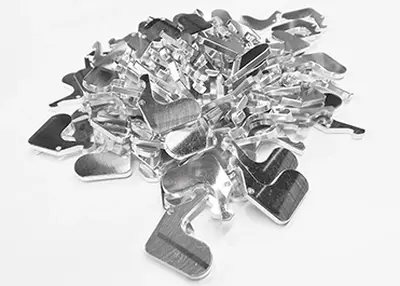 Custom Machined Metal Parts: Precision at Your FingertipsNovember 9, 2023Do you crave perfection in your machinery? Are you seeking the ideal metal components for your projects? You've come to the right place! Welcome to Richconn, your reliable partner for custom machined metal parts. In this comprehensive guide, we'll explore the world of precision engineering, from understanding the basics to choosing the right materials, processes, and designs.view
Custom Machined Metal Parts: Precision at Your FingertipsNovember 9, 2023Do you crave perfection in your machinery? Are you seeking the ideal metal components for your projects? You've come to the right place! Welcome to Richconn, your reliable partner for custom machined metal parts. In this comprehensive guide, we'll explore the world of precision engineering, from understanding the basics to choosing the right materials, processes, and designs.view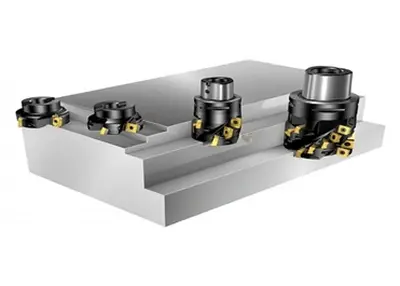 CNC Cutting Aluminum Sheets for Electronics EnclosuresFebruary 29, 2024Elevating Electronics Enclosures with CNC PrecisionIn today's fast-paced technological landscape, where precision and efficiency are critical, the manufacturing of electronics enclosures demands i...view
CNC Cutting Aluminum Sheets for Electronics EnclosuresFebruary 29, 2024Elevating Electronics Enclosures with CNC PrecisionIn today's fast-paced technological landscape, where precision and efficiency are critical, the manufacturing of electronics enclosures demands i...view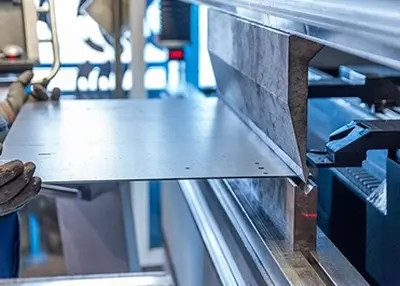 5 Bending and Forming Methods for Sheet MetalDecember 4, 2023Sheet metal refers to a process used to manufacture a variety of metal products, which involves processing sheet metal into the desired shape and size by cutting, stamping, bending, and welding.view
5 Bending and Forming Methods for Sheet MetalDecember 4, 2023Sheet metal refers to a process used to manufacture a variety of metal products, which involves processing sheet metal into the desired shape and size by cutting, stamping, bending, and welding.view What Is Mechanical Rack: Picking the Best for Your Custom PartsMay 22, 2024Delve into the world of equipment racks with this comprehensive article. Learn about their structure, design principles, materials, manufacturing processes, installation, commissioning, and more.view
What Is Mechanical Rack: Picking the Best for Your Custom PartsMay 22, 2024Delve into the world of equipment racks with this comprehensive article. Learn about their structure, design principles, materials, manufacturing processes, installation, commissioning, and more.view 7 Best Tips for Sandblasting (The Complete Basics to Get Started)August 24, 2023Sandblast is a process that has been used for many years. It is used to clean, etch, and prepare surfaces before they are painted or coated with another material. Unfortunately, sandblasters are machi...view
7 Best Tips for Sandblasting (The Complete Basics to Get Started)August 24, 2023Sandblast is a process that has been used for many years. It is used to clean, etch, and prepare surfaces before they are painted or coated with another material. Unfortunately, sandblasters are machi...view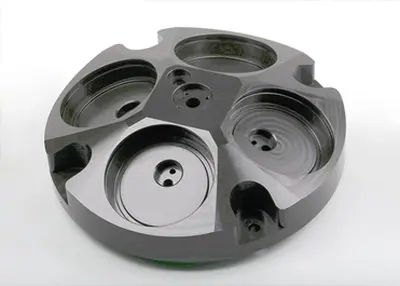 Understanding the Properties of Anodizing Process in One ReadingApril 4, 2023Nowadays, the use of metal technology is quite popular, and many machines in the market have large metal parts. One of the surface treatment processes for metal is anodizing, which is very commonly us...view
Understanding the Properties of Anodizing Process in One ReadingApril 4, 2023Nowadays, the use of metal technology is quite popular, and many machines in the market have large metal parts. One of the surface treatment processes for metal is anodizing, which is very commonly us...view